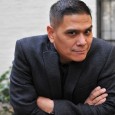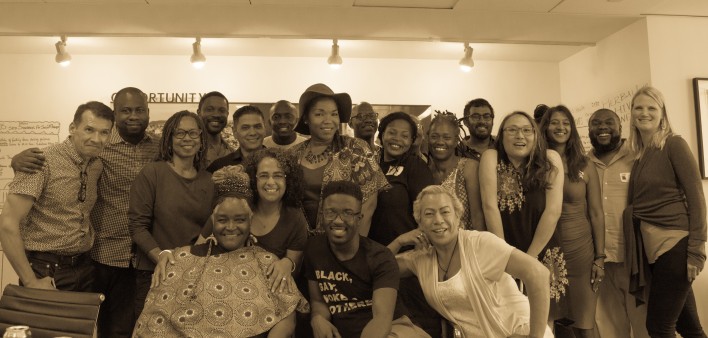Race is a sensitive topic in the United States (perhaps it is everywhere, but I want to focus my points on the domestic context). Within two terms of President Obama, there was a burgeoning susurrus that we were “post-racial” and (mostly White) liberals breathed sighs of relief. For many people of color, we knew that the “post-racial” concept was an illusion, and a flimsy one at that. This last year has cemented race as a cornerstone of the United States vision of itself, a clear flag on the field of injustices, and a topic that remains difficult for some to touch. It has become clear the President is a racist and supports White Supremacists. His most recent slurs against El Salvador, Haiti and all African nations are part and parcel of his Administration. Race and racism have trumped concerns over socio-economic, healthcare and educational opportunities for a broad swath of Americans.
In HIV, race has been a prominent feature of the epidemic for over twenty years in this country. Gay men of color, trans* people of color, and women of color have long occupied the majority of people acquiring HIV in our respective population markers. “Trickle down” public health policies do not work. Focusing on White gay men or White women has not had any meaningful impact on HIV in communities of color beyond HIV treatment. In fact, the downfall of HIV organizations has been correlated by some to the shift in concerns of the White gay and lesbian community (primarily to marriage) and its connections to philanthropy and business. As the HIV epidemic became browner, the funding seemed to shrink and get tighter. Where once organizations were trusted to do what’s best for their community, the funding portfolios became more restrictive — in some cases even providing scripts that had to be maintained when dealing with “our” people (no matter how oddly-shaped or out-of-date these scripts were). Now that HIV organizations are removing HIV from their mission statements, agency descriptions, and even names, I wonder how they will bolster the community work that still needs to happen.
And it does need to happen. The clinic model can be extraordinarily useful for obtaining effective treatment, but it is markedly less effective in dealing with social support and connection, inspiration, spirituality, homelessness, mental health, substance use, unemployment, lack of educational opportunities, homophobia, racism, sexism, and transphobia. Something as basic as pleasure in our sex life is not necessarily part of a clinical visit, unless the provider opts to do so (and the institution supports that choice with resources). As Dr. B. J. Miller usefully points out, “healthcare was designed with diseases, not people, at its center.” We need to respect what these spaces are good for, and not expect them to fulfill the other elements that community institutions are better able to support.
As someone concerned with the ways that people living with HIV are involved in the development and implementation of HIV services, advocacy and science, I want to pay attention to how to get people living with HIV involved. In 2018, thirty+ years into the epidemic, race is a good place to center our HIV responses.
The Racial Justice Framework Group released "A Declaration of Liberation: Building a Racially Just and Strategic Domestic HIV Movement” in November 2017. The Racial Justice Framework Group was convened by the Positive Women’s Network-USA and the CounterNarrative Project as a way of envisioning HIV racial justice. After two days of intensely facilitated discussion, we came up with the Declaration over the course of weeks of drafts, revisions and conference calls. Key concepts in this manifesto include: intersectionality, resisting Anti-Blackness, culture is a strength, and understanding the historical frames. These undergird our work — the acknowledgement of our power and our pain, the recognition of structural inequities, and the embrace of our multiple identities and how these can be uniquely targeted. We recognize that, since the advent of this 45th Presidency, the attacks on us have gotten worse, more public, and rapidly degrading the institutional responses to HIV today.
After “A Dialogue of Liberation” was released, I was surprised at some of the responses, on all sides. On one hand, I heard from a few senior leaders of color (all publicly HIV-negative) bemoaning their absence in the document. In their view, any document about race and HIV requires a citation of their body of work to be valid. The ego involved here saddens me, as many of these people have gotten several awards and recognitions in other venues, including in people living with HIV spaces. There was no acknowledgement with how to be ’in community’ with other leaders of color without this hierarchy.
On the other hand, a friend at a large HIV organization proudly brought the Racial Justice Framework Group manifesto up over dinner. The new CEO saw the document and embraced it, bringing it into management meetings and asking why this organization did not have a racial justice focus. This heartened me, as my own experience with that organization has never been particularly race-sensitive. The Framework for Racial Justice is meant to inspire more organizations to commit in moving forward.
Whenever race becomes the focus of an HIV space, I have heard the question (from mostly White people), “What about me? What about my voice? Where do I belong?” I do not want to get into a discussion of White fragility; I do want to touch on the topic of ally-ship. I know that the ally word is an over-used one (in fact, former South Carolina Governor and current U.S. Ambassador to the United Nations Nikki Haley claims to be an “ally” of the LGBT community, even as she does the work of this President and voted against sanctions against death sentences for homosexuals internationally). There is a difference between being nice and being an ally. I get that people want to appear as if they like everyone, but being an ally means that you have to stand up against the weapons targeting me and other people living with HIV. It means knowing how to be in a room with others and be conscious about how much and what kind of space we take up.
An example: When my colleague and friend Naina Khanna asked me why I don’t consider myself a feminist, I hemmed and hawed, giving back the cheap argument, “It’s not my place to say I’m a feminist.” As if gender identity were the essential part of feminism. By not identifying as a feminist, I allow feminism to be invisible in the spaces where I’m a teacher, a leader, an advocate, and a community member. When in fact I want feminism to be visible, to be understood, to be appreciated as the life-saving politic it can be. I bought a t-shirt that says “This is what a feminist looks like” and wore it to the Funders Concerned About AIDS annual meeting where I was on the plenary. I also wear it to class. It is not my role to determine who is a feminist, or to claim some kind of perfect proto-feminism; it is my role to create space for feminism to be visible, and for people to be able to talk about and interrogate feminism.
Our hope is that the Declaration speaks to individuals, communities and organizations. We offer a vision where organizations can work toward racial justice in programs, advocacy choices, policies, hiring and community partnerships. We purposefully did not provide a “sign-on” option, as organizations often sign onto declarations or initiatives that they then do little to support.
Here’s the challenge with racial justice — we do not know what it looks like in HIV. Even amongst other people of color, there is a huge difference in where we stand on race and racism. There are moments when it feels like HIV is ready to embrace #BlackLivesMatter or stand against anti-immigration policies, but these are fleeting. Then we are again in meetings where government officials or HIV leaders (some of them well-intentioned) repeat decades of trauma by obfuscating the impact of racism, overlooking trans* lives in the epidemic, making invisible the particular needs of women, avoiding sex workers and their issues completely, or minimizing the importance of our sexual and mental health. Many HIV organizations still have not taken public stances against HIV criminalization laws — knowing these serve no scientific or public health purpose. Many HIV organizations have publicly signed onto U=U without updating their websites, HIV educational materials and in-service training for staff to better discuss sexual options for people living with HIV.
Perhaps it is the process, the dynamic of pursuing HIV racial justice that is important. In Cruising Utopia, José Esteban Muñoz wrote about politics and identity, “queerness… does not yet exist… holding queerness… under a conceptual grid in which we do not claim to always already know queerness in the world, potentially staves off the ossifying effects of neoliberal ideology and the degradation of politics brought about by representations of queerness in contemporary culture.” In a similar way, I think we need to pursue racial justice in HIV constantly, consistently, with our whole passions and brilliance and empathy. We cannot afford to use ossified concepts of race in HIV, we need to seek justice.
When we say that the prison-industrial complex is part of the problem in HIV with people of color, listen to us. Think about it.
When we say that racial justice will advance our work in HIV, listen to us. Think about it.
We released the Declaration as a way of envisioning a new way of doing HIV business. Join us.








Comments
Comments